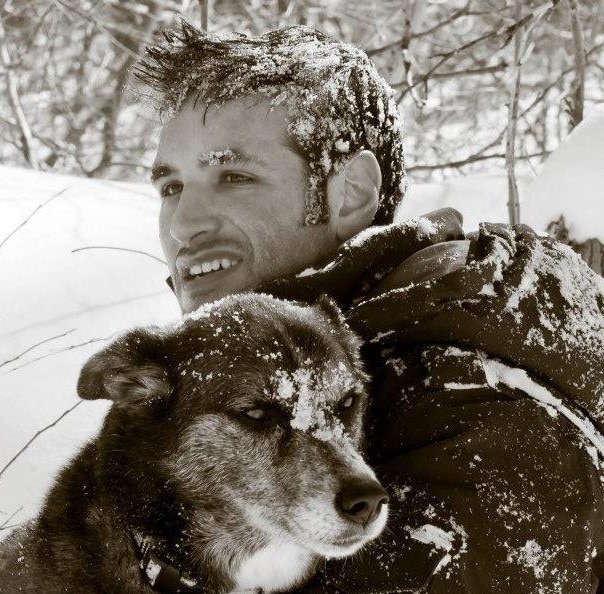How to stay positive while recovering from running injuries

An injury doesn't have to completely take you out. In fact, it can be a chance for you to improve as an athlete. Staying positive during running injuries, though, is much easier said than done. But you're a runner. You're tough, determined and resilient. So, how can you stay positive even when you're recovering from a running injury?
As runners, we love the sport. And often, running gets elevated in our minds to a somewhat infallible and mythical state. Running can do no wrong. It's empowering and improves our minds and bodies in an amazing way. Which is absolutely true.
It's also true, however, that running injuries are troublingly common. In fact, researchers at Yale Medicine estimate that at least half of all regular runners will deal with some sort of injury each year. So, if you maintain your running habit for many years, chances are pretty high you will be injured, in one way or another, at some point.
The trick to recovery, it turns out, is maintaining a positive attitude. Doing so has actually been known for a very long time to improve recovery time in all sorts of situations.
Shift your focus to recovery
Generally, if I asked you — or any other runner, for that matter — what your current goals were, you would likely answer with something like "improve my mile pace" or "complete a marathon". You know, something runnerly. When recovering from a running injury, though, things are a little different. Or, at least, they should be.
Imagine, for example, you're already dealing with an overuse injury like Achilles tendinitis, also known as the somewhat ominous "runner's heel". Like other common running injuries, this particular situation is caused by the repetitive and stressful act of smashing your feet into the ground over and over again. You know, the thing we call running. What do you suppose would happen, then, if you continued to push through the pain and pursue your goals of faster, longer runs? It's clear the swelling will not get any better. Rather than sticking to your typical focus, goals and mindset, then, a change is in order. When recovering from running injuries, your new goal is simple: Recover.

As logical as this conclusion is, though, it is one many runners — including myself — tend to struggle with. Personally, I had a harrowing experience early in my running career with one of the most common running injuries: shin splints. OK, it may not be a particularly severe injury, but the impact on my runs was incredibly discouraging. As a new runner, I had been working hard to build up my base and make rapid progress. And then I started to develop the dull ache associated with shin splints. When I talked to the track coach about it, he said it was just shin splints and nothing to worry about. Which, as it turns out, wasn't the greatest advice. The guidance offered by the coach wasn't exactly wrong, but it wasn't entirely complete, either.
Armed with the reassurance that I was only dealing with shin splints, I kept following my normal workout routine. And started to get slower. Not only did my speed decrease, but my overall endurance did as well. All the while, the pain in my shins after running didn't go away. What was the problem? I had refused to accept the new reality of my fitness world and tried to stick to my existing goals. Eventually, I took some time away from running completely, which was a game-changer. During that time, I focused on recovery. Rather than being running-centric, my goals started to revolve around my flexibility, balance and pain levels. Eventually, the pain went away, and I was able to get back to my runs as a better, more patient runner.
If (or when) you deal with a running injury, do not minimise it or try to power through. Instead, see this as a different stage in your training and adjust your thinking and goals to embrace the opportunity to recover.
Cross-train to stay mobile
One way this shift in thinking may manifest itself is through cross-training. Runners run, and we don't tend to spend a lot of time in other athletic pursuits. Remember, though, most athletic injuries are classified as overuse injuries. Meaning the issues are directly related to the focused and repeated effort of running. Often, these injuries can be strong indicators that you're lacking in some other aspect of your fitness like strength, balance or mobility.
While training for my first official race, I again fell into the overuse trap and developed an injury. This time, the culprit was a strained calf. Based on previous experience, I knew that running through it wasn't the answer. I had at least learned that much. Weightlifting, my other training modality of choice, didn't really help the situation, though. Lifts that focused on my calves seemed to make things worse. So, the question was this: How can I continue to get cardiovascular training and encourage my calves to heal without putting any additional strain on them?

Two forms of training seemed to be the solution: cycling and Pilates. Because of the way bikes distribute the load, I could keep up my endurance training without overloading my calves further. This also gave me the chance to target other muscle groups that don't get as much attention during a run. Pilates gave me the chance to work on my balance and mobility in a low-impact environment. Again, once the pain in my calves subsided and I got back to running, my performance had notably improved.
So, while an injury can be frustrating, it can also be a reminder that your training is lacking in some areas. After all, fitness is a multifaceted thing, and running, wonderful as it is, simply doesn't address all of those aspects of your training. During your running injury recovery, use that time to cross-train and focus on whatever insufficiencies you might see in your training. Not only will this keep you moving forward in your overall fitness journey, but it will also prevent you from sinking into any discouragement you might otherwise feel while taking time away from running.
If you've been inspired to try cross-training to help with your running injury recovery, explore through our Brooks Shoes to get you started with the right gear.
Leverage a support system
As mentioned earlier, most runners will deal with some sort of injury during their athletic careers. It's not great, but it's the truth. And one of the consequences of running injuries is that you can start to feel isolated. Maybe you used to run with a group and, because of the injury, you just can't anymore. Or maybe the injury has just thrown you off your game and you don't feel like yourself, lacking the motivation to get up and do anything. Whatever the case, the physical impact of running can also affect you mentally and emotionally. Frustratingly, this can also create a bit of a vicious cycle wherein you feel bad because you can't be as active as you used to be and you aren't as active as you used to be because you don't feel well.
During these seemingly dismal days, a supportive community of family and friends can be incredibly valuable. And, it's important to note this support system may or may not consist of other runners. Of course, runners who have experienced something similar might be a good source of encouragement and advice, but that's not entirely what the community is about. Mostly, it's just about getting you out of your head and preventing you from wallowing. The simple act of being around people can help you stay positive while dealing with running injuries.

You may also find that your friends open up ways for you to cross-train you might not have thought about otherwise. For example, during periods when I was forced to take some time away from running, I played a lot of Ultimate with friends. Because these were casual games and thanks to the no-contact nature of the sport, this was a perfect way for me to stay active and social while also not aggravating the problem. Similarly, a friend of mine I used to run with frequently had to take some time off but didn't want to sit home by himself either. So, he cycled while I ran. He also made a ton of Rocky references. Hiking also opened up plenty of opportunities for my friends and me to spend time together without adding to any overuse injuries I might be dealing with.
Whatever form this support system takes, the important thing is you fight the urge to be totally inactive and isolate yourself. This can be a real danger when you're told to rest an injured limb or joint. Remember, rest doesn't mean inactivity, and recovery can — and should — be active. Staying active and spending time with family and friends can go a long way toward maintaining a positive attitude while recovering.
Put yourself on the path to future success
As runners, we push ourselves physically and mentally all the time. And, while this does allow us to improve in a variety of ways, it can also open us up to the risk of injury sometimes. If you do suffer an injury at some point, though, remember that it's by no means the end of your running career. Instead, view the recovery period as just another phase of your training. Take that time to cross-train and focus on any potential gaps in your usual routine. Recovery periods can also be a perfect time to strengthen your connections with your community of family and friends. These steps can help you stay positive even when you're recovering from a running injury.
Our writer's advice is intended for informational or general educational purposes only. We always encourage you to speak with your doctor or healthcare provider before making any adjustments to your running, nutrition or fitness routines.
